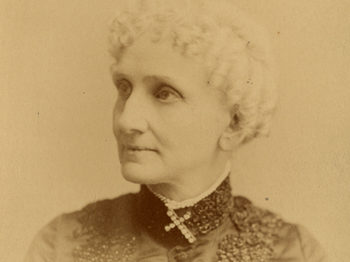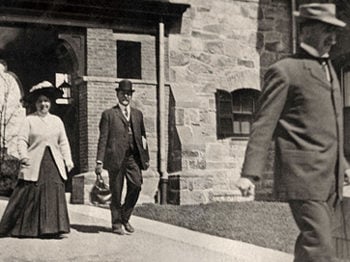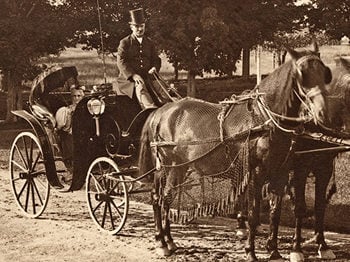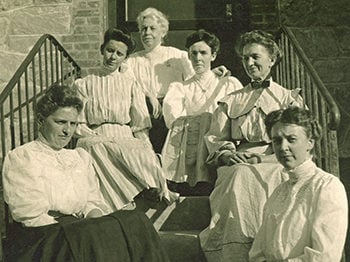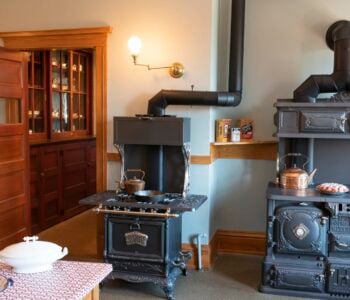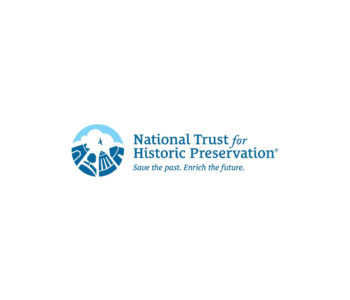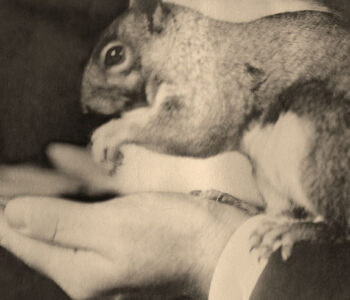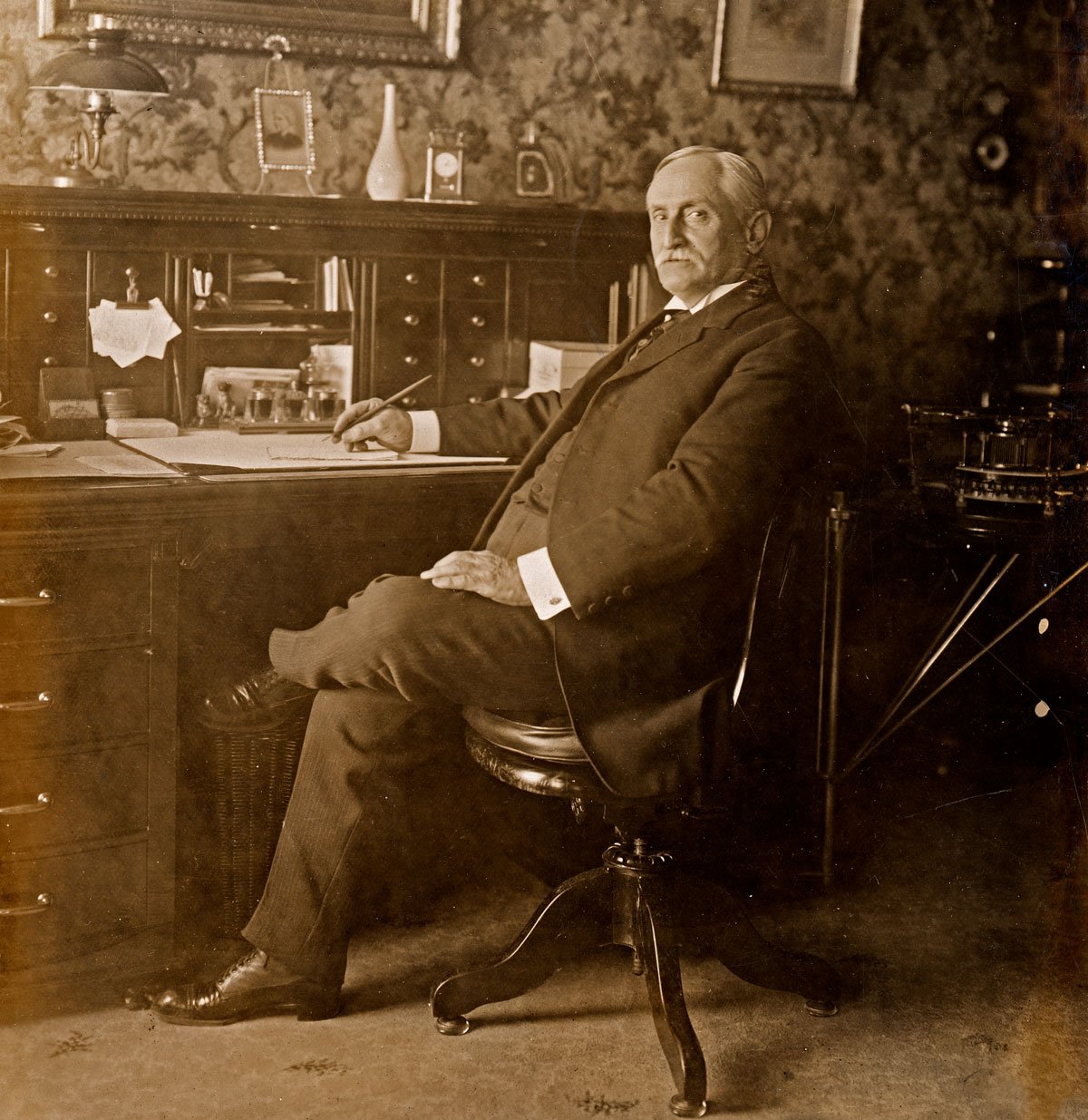
What started out as a regular working morning last fall turned into a delightful day of discovery for two Longyear staff members, as they came upon a set of new artifacts to add to the Museum’s collection—a small notebook containing several turn-of-the century stamps, found in the desk of Calvin Frye, Mary Baker Eddy’s longest-serving aide and close confidant.
As part of their to-do list that October day, Historic House Manager Rex Nelles and 400 Beacon Street Site Manager Chris Rankin were ensuring proper placement of furnishings in various restored rooms at Mrs. Eddy’s final home. (The restoration of this historic residence in Chestnut Hill, Massachusetts, is nearly complete, and the house will open to the public in May 2024.)
Among the many items being carefully repositioned was a magnificent, mahogany roll-top desk of which Mr. Frye was justifiably proud: He had received it in 1903 as a gift from the Executive Members of The Mother Church to commemorate 21 years of loyal, uninterrupted service to Mrs. Eddy.1 According to a contemporary, “It was the first desk Mr. Frye had ever had and his pride and delight in it was childlike.”2
Mr. Frye’s meticulously organized daily tasks included, among others, handling mountains of incoming and outgoing correspondence, taking detailed notes from Mrs. Eddy, overseeing copyright issues, communicating with Church officials, and keeping household accounts.3 So one can imagine his delight with a workspace that offered 24 mini drawers underneath the roll top, eight large drawers in the two pedestals, more than half a dozen horizontal and vertical slots for letters and assorted papers, plus a few cleverly concealed cubbies. (Yes, we counted them all!) Mr. Frye’s state-of-the-art piece of office furniture was manufactured by Derby Desk, a large and well-known factory located in Somerville, Massachusetts, whose building is still standing and currently houses local businesses.
As our Longyear team carefully maneuvered the desk into place in Mr. Frye’s office at 400 Beacon, they wanted to address a long-standing impediment to the smooth and complete opening of the desk’s tambour (slatted roll top). This jam meant that several of the drawers under the roll top could not be accessed, because the tambour’s free movement is necessary to trigger a complex unlocking mechanism built into the back of such desks. Ever persistent, Rex and Chris identified a problem with a small lever after some careful sleuthing. A quick adjustment was made—and voila! the lid was able to retract entirely, thus unlocking drawers that had remain unopened for unknown years or decades.4
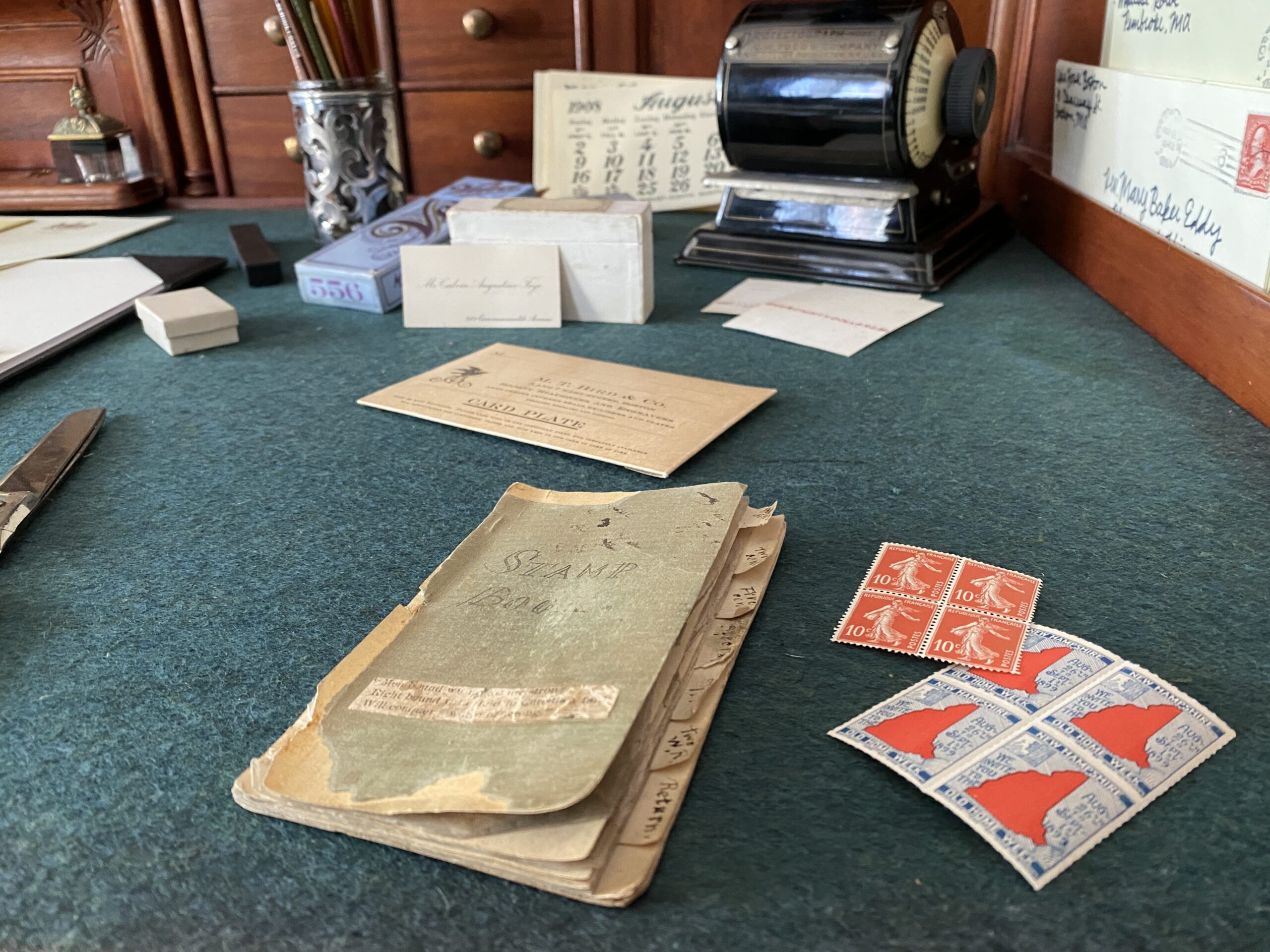
As they eagerly checked their handiwork, Rex and Chris came upon the notebook, with tabbed pages and a faded inscription on the cover, containing about 25 stamps. Four stamps with bright orange marking commemorate New Hampshire’s 1899 “Old Home Week” (read about Mrs. Eddy’s support for her home state’s celebration in the Longyear archive). Another four are French stamps, in issue from 1902–1926, which depict La Semeuse (“The Sower”) by Oscar Roty; and there are 17 stamps depicting Germania, a symbol or personification of the German nation, that were first issued in 1900.
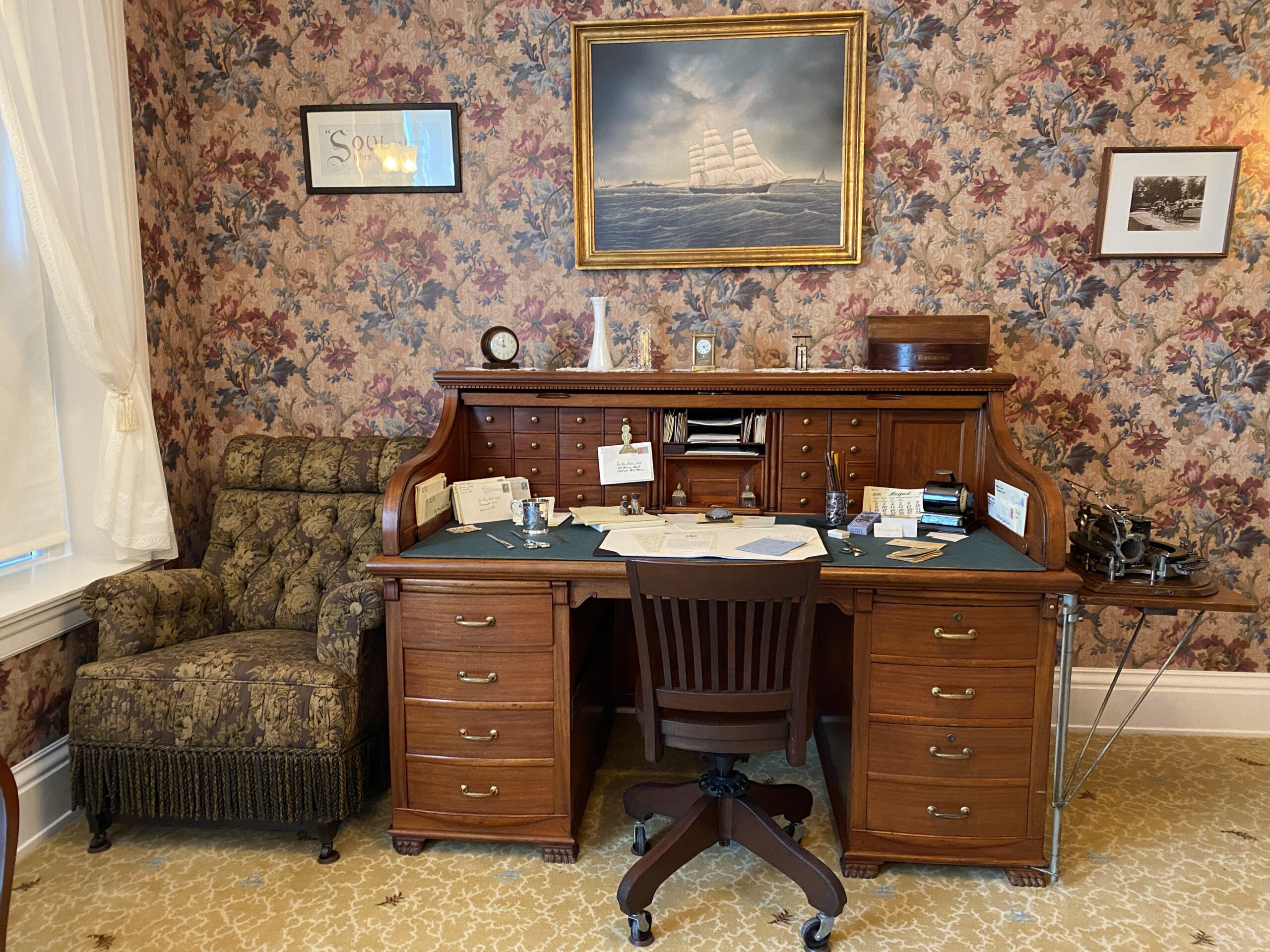
All the items have already been carefully cataloged by Longyear’s Collections team, with the booklet itself being placed on Frye’s desk, and the stamps stored away in our climate-controlled vault. While we don’t—and probably won’t—know too much more about these specific items, their presence and location offer a glimpse of the everyday, ordinary articles that supported the functioning of an extraordinary household that served so effectively as the executive headquarters of the Christian Science movement.
Visitors to 400 Beacon Street will soon be able to experience Mr. Frye’s office almost exactly as it was during his years in Mrs. Eddy’s Chestnut Hill household (1908–1910), by the end of which he had served her for a total of 28 years. Visitors will find the work surface and top of his desk displaying many office tools and items in use at the time—including inkwells, a check-embossing machine, a turn-of-the-century typewriter on an ingenious swivel stand … and yes, the newly discovered stamp booklet, too!


